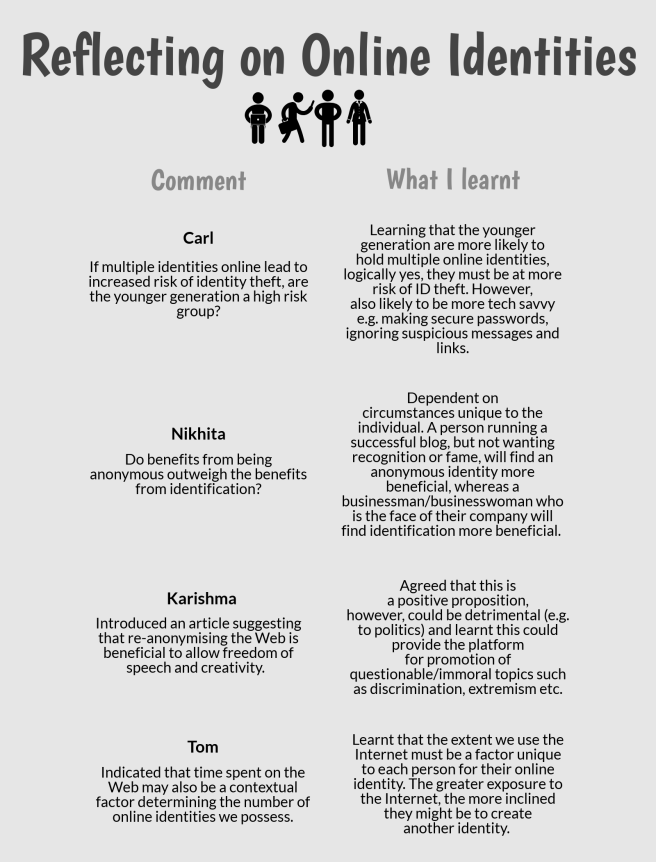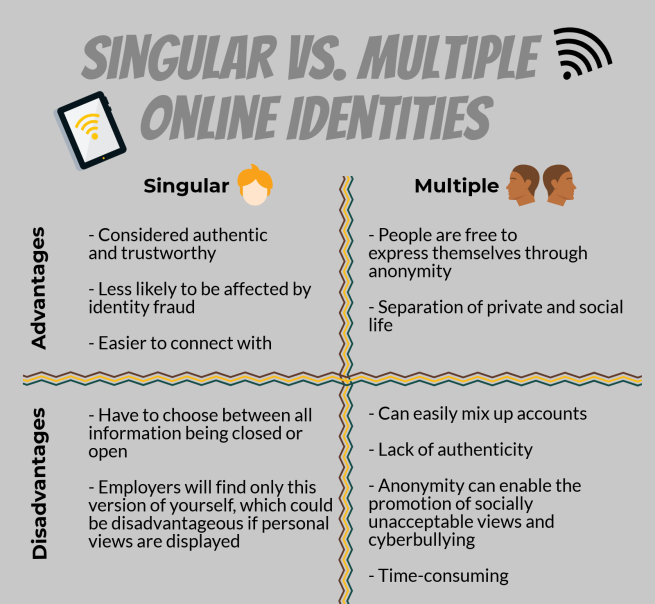Throughout the last few days, my understanding of online identities has largely deepened, owing to interactions with both colleagues’ own posts and comments within my own.
Comments on my Post
Challenging questions posed on my online identities post led to interesting additional research. The table below summarises each comment, in addition to how they shaped my own comprehension.

Dekkers (2018) created with the software Piktochart
Carl’s comment, Nikhita’s comment, Karishma’s comment, Tom’s comment
Others Posts
Reading Tewsdae’s post this week brought my attention to authenticity on the Web. Explaining that we still hold as a genuine individual, despite adjusting our character in different company, caused me to question if a loss of authenticity is not such a significant drawback from possessing multiple identities online as I originally thought.
Also regarding authenticity, Nikhita’s post stated that maintaining a single identity across all platforms is more integral. Researching singular identities, I found an article challenging this statement, which suggested that people generally portray the best version of themselves online and therefore, is anyone ever truly authentic on the Web (Dansky, 2017). This led to an interesting discussion, to which we both agreed authenticity is improving on the Web, owing to increased discussion of sensitive topics on social media (such as mental health and the #metoo campaign).
Furthermore, Nikhita suggested that transitioning into working life may change the need for multiple identities online. This led to my understanding that age and employment status are other contextual factors influencing the number of identities we have, solidifying my opinion that online identities is a circumstantial matter.
Conclusion
Despite holding the same original conclusion, in that the number of online identities a person holds should be circumstantial and down to each individual, connecting with others has introduced lots of factors I hadn’t considered. Additionally, my opinion has altered that authenticity shouldn’t be assumed with a singular identity and discounted with multiple identities.
[Word count: 299]
Bibliography
Dansky, J. (2017) The Struggle to Stay Authentic on Social Media. Available from: https://www.huffingtonpost.com/jordan-dansky/the-struggle-to-stay-authentic-on-social-media_b_9563234.html

